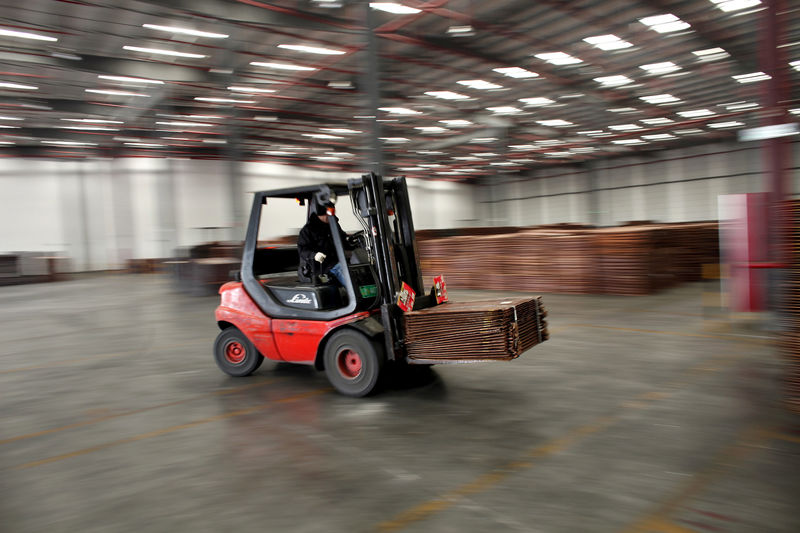By Melanie Burton
MELBOURNE (Reuters) - London copper was on track for its biggest weekly rally in over 35 years on Friday as hopes of U.S. infrastructure spending on Donald Trump's election win and firming demand from China drag metals out of a years-long bear market.
Copper was trading up 3 percent in late Asian trade, rising for a seventh straight session and up more than 15 percent for the week, on track for its biggest weekly rise since 1980, according to Reuters data.
Copper has been pushed higher by a surge in China steel and coal prices, as well as a view emerging before Trump's surprise electoral victory that the metal's outlook for 2017 will be rosier than thought. Trump's comments in his acceptance speech on increased infrastructure spending fuelled further buying.
After looking set to end the year flat just three weeks ago, London Metal Exchange copper prices have rallied by a quarter to more than $5,800 a tonne, the highest since July 2015.
"I think we're out of a bear market and into a bull market for copper. I turned bullish about a month ago," said UBS analyst Daniel Morgan in Sydney.
The pace of gains has been amplified by momentum-based fund buying, much of it from China, after prices this week smashed through a key chart resistance that has tracked copper's downtrend over the past five years, traders said.
"When you break such a downtrend, especially on a weekly chart that has been in place for years, it's significant," said a trader in Singapore.
Demand for copper from China, the world's biggest users, has turned out stronger than expected after a first-quarter credit infusion that stoked its property and construction sectors.
"Views on China improved compared with expectations at the start of the year as demand surprised to the upside," Citi said this month, putting industry estimates of Chinese demand in 2016 at 5-7 percent, from 0-3 percent at the start of the year.
Copper demand from China's power grid sector, which accounts for nearly half its consumption, surged 33 percent in the first eight months of the year.
Analysts are also revising down expectations of mine supply for 2017, after January's price slump to six-year lows forced some high-cost mines to shut, and with new supply from Peru largely complete.
"Consensus estimates suggest little copper oversupply in 2016 to overhang the market next year," Citi said, supporting the surge in the copper price.
"It represents a shift in expectations around where the market sees demand over the course of 2017," said strategist Daniel Hynes of ANZ in Sydney. "Fundamentals have not been as bad as the market has priced in."
